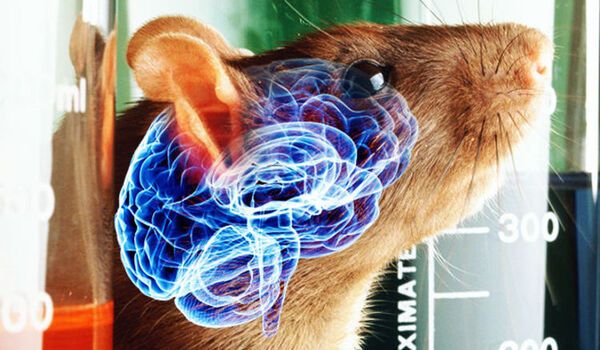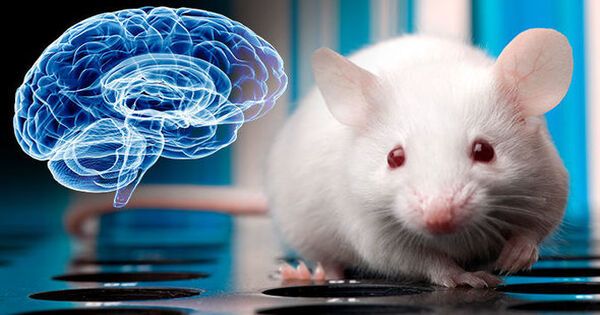Mice without an olfactory system had their sense of smell restored using neurons from rats, marking the first time scientists effectively integrated sensory apparatus from one species into another.
Researchers led by Kristin Baldwin of Columbia University have created mice with hybrid brains – half mouse, part rat – that detect scents in the environment using rat neurons. It is the first time an animal has been able to use another’s sensory apparatus to sense and respond appropriately to the world, and it demonstrates how adaptable the brain can be in integrating external brain cells.
“This research is starting to show us how we can expand the flexibility of a brain so that it can accommodate other kinds of inputs, from human-machine interfaces or transplanted stem cells,” says Baldwin, professor of genetics and development at Columbia University Vagelos College of Physicians and Surgeons.
Researchers are transplanting stem cells and neurons into people with Parkinson’s and epilepsy. But we do not really understand how well that will work. With hybrid brain models, we can start to get some answers and at a faster pace than a clinical trial.
Kristin Baldwin
Hybrid goals
One of the most difficult obstacles in studying and treating human brain diseases is that present research methodologies cannot provide a complete understanding of these disorders.
“We have beautiful models of cells in dishes and 3D cultures called organoids and they both have their advantages,” says Baldwin, “But none of them allow you to determine if the cells are really functioning at the highest level.”
Hybrid brains will help researchers better understand how brain cells become unwell or die, as well as the principles for healing and replacing brain components.
“Right now, researchers are transplanting stem cells and neurons into people with Parkinson’s and epilepsy. But we do not really understand how well that will work,” she adds. “With hybrid brain models, we can start to get some answers and at a faster pace than a clinical trial.”

Creating hybrid brains
Researchers have previously constructed hybrid brains by injecting neurons or transplanting pea-sized brain organoids from one species into a growing or fully formed brain, such as that of a mouse or rat.
“These experiments have told us that we are somewhat limited in when and how we can add brain cells to an existing brain,” Baldwin explains. “If the brain has developed to a certain point, the transplanted cells don’t necessarily wire together appropriately.”
Instead, Baldwin’s team injected rat stem cells into mouse blastocysts, an early stage of development that occurs just hours after fertilization, allowing the rat and mouse cells to grow together and integrate on their own.
The technique, called blastocyst complementation, is similar to a technique used to create mice with human immune systems, which have proven to be powerful research tools. But until this study, the technique had not been successful in creating hybrid brains of two different species.
“What we’re doing is really cutting edge,” Baldwin says.
Rat neurons restore sense of smell in mice
In the team’s first hybrid tests, they looked at where rat neurons appeared in mouse brain. Rats develop at a slower rate and have larger brains than mice, yet the rat cells followed the mouse’s instructions, accelerating their development and creating the same kind of connections.
“You could see rat cells throughout almost the entire mouse brain, which was fairly surprising to us,” Baldwin explains. “It tells us that there are few barriers to insertion, suggesting that many kinds of mouse neurons can be replaced by a similar rat neuron.”
The researchers then investigated whether the rat neurons had been incorporated into a working brain circuit, namely a component of the olfactory system, which is critical for mice in finding food and avoiding predators. By manipulating the mouse embryo to destroy or inactivate its own olfactory neurons, the researchers were able to quickly test if rat neurons had restored the animals’ sense of smell.
“We hid a cookie in each mouse cage, and we were very surprised to see that they could find it with the rat neurons, “Baldwin explains.
Some mice did better at finding the cookie than others, however. The researchers found that mice that retained their own, silenced olfactory neurons, were less successful at finding hidden cookies than mice whose olfactory neurons were engineered to disappear during development.
“This suggests that adding replacement neurons isn’t plug and play,” Baldwin says. “If you want a functional replacement, you may need to empty out dysfunctional neurons that are just sitting there, which could be the case in some neurodegenerative diseases and also in some neurodevelopmental disorders like autism and schizophrenia.”
With the hybrid brain system created by Baldwin’s team, researchers can now use the mice to carefully dissect what happened in the different models, which may eventually help improve the success of human cell transplantation.
Primate hybrids?
One disadvantage of the new hybrid brain system is that the rat cells were randomly dispersed in each animal, posing a challenge in expanding these findings to other sensory and neurological systems in the brain. Baldwin’s lab is currently looking into ways to direct the transplanted cells to develop into a single cell type, which could allow for more accurate research.
If inserted cells are limited in their development within hybrid brains, it may be possible to create hybrid brains with monkey neurons. “This would help us get even closer to understanding human disease,” Baldwin asserts.
















